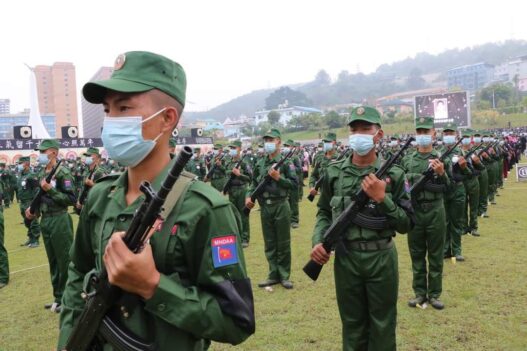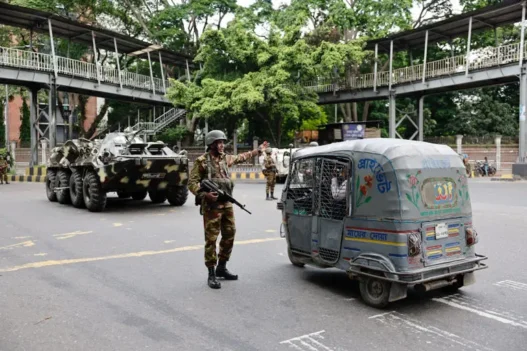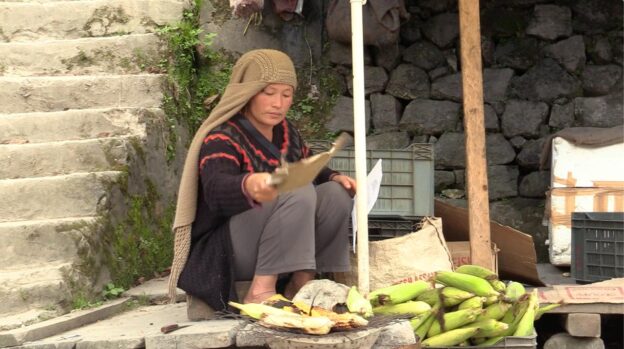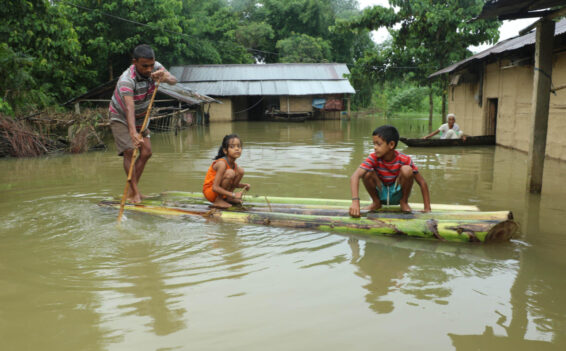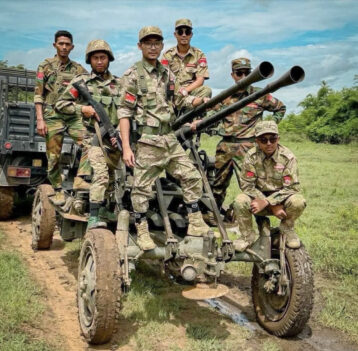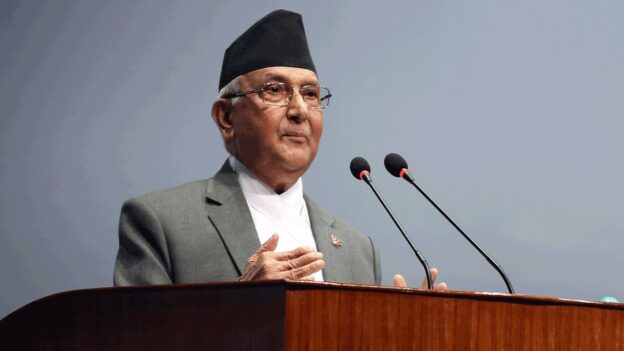A small room dedicated to the Rangfraa God, an altar that rests the cross-legged idol, revered by the indigenous community of the Tangsas can be seen as one enters the house of Mr. Khimun, the General Secretary of Rangfraa Faith Promotion Society. The Rangfraites Holy book “The Third Coming of Rangfraa”, 5 clay lamps lit, incense, and a bottle of holy water are placed next to the idol.
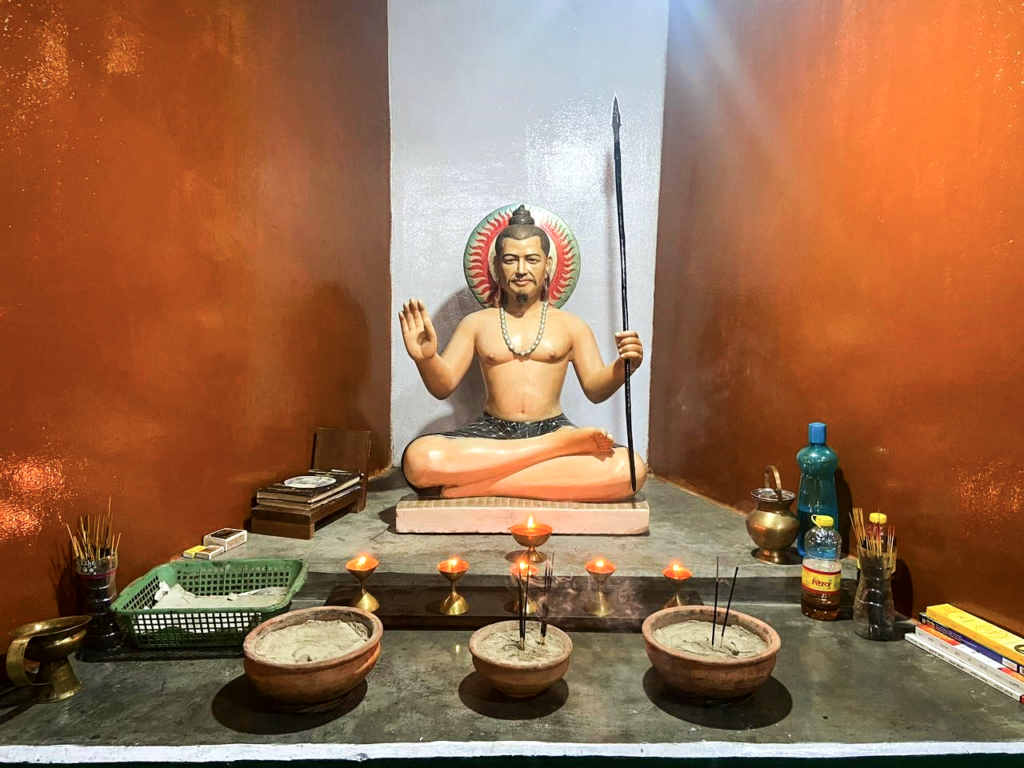
It is claimed by many in the region that Rangfraism is an offshoot of Hindu Sanatan Dharam usually accepted as a synonym for tribal ways of worship. Their idol has been (mis)represented as a mongoloid lord Shiva. However, the Rangfraites have persevered to trace an origin and continuation of Rangfraism from their traditional faith refuting all claims of Hinduisation.
Rangfraism came to prominence during the 1990s when a group of educated Tangsa elites came together attempting to reinvent and reinstate the traditional faith by institutionalizing their older traditional religion with new “systems of worship”. It is followed by the Tangsa tribe of Arunachal Pradesh who are settled in the southeastern hills of Changlang district along the Indo-Myanmar border and Namchik basin.
“Tangsa” is an umbrella term for about 35 trans-patkai ethnic groups in Arunachal Pradesh and Assam who entered India from present-day Myanmar. They were earlier referred to as “Any Naga tribe” in the Scheduled Tribes’ List. However, In 2013, an amendment to the Constitution (Scheduled Tribe) order, 1950 was put forth to delete the words “Any Naga Tribe” from the state’s ST list and replace it with the specific names of Nocte, Tangsa, Tutsa, and Wancho tribes in order to dissociate the tribes from their Naga counterparts and the insurgency involved. Finally, in 2021, the amendment was passed by Rajya Sabha to modify the Scheduled Tribes’ list in Arunachal Pradesh. Despite that, the Naga influence has been imminent in their social, economic, political, and religious lives. One major impact was seen in the form of proselytization activities in the region. By the mid-twentieth century, a large number of Christian conversions had already taken place. This implied that the Tangsas were giving up their old cultural and traditional practices for their new religion, Christianity. Many attest that practicing traditional culture and norms was seen as a sign of ignorance and backwardness. To overturn this perception, Rangfraism adopted elements of all world religions to make it conducive to its followers.
An overview of experienced marginality by the Tangsas
Stuart Hall, a cultural theorist writes, “Representation is a complex business and, especially when dealing with ‘difference’, it engages feelings, attitudes, and emotions and mobilizes fear and anxieties in the viewer, at deeper levels than we can explain; in a simple, common-sense way.” The rapidly growing Christian conversions and the negative disposition of the people towards their traditional practices warranted the reinvention of their older religion to “Rangfraism” due to the heightened insecurity and precarity in terms of the culture and identity experienced by the Tangsas in Arunachal Pradesh. I carefully use the term, reinvention here, as many traditional facets of their religion were consciously removed to appeal to the followers who were also constantly evolving with new ideas and perceptions of the world. Their representation of the self compelled the creation of “otherness” to legitimize their identity (Claude Levi Strauss, a French anthropologist’s understanding of “Binary Oppositions” where the creation of “Other” entails further legitimacy to one’s representation by introducing contrast). Thus, Rangfraism as an institutionalization of the traditional Tangsa faith, embarked on the path to self-determination by contrasting and juxtaposing itself with Christianity. Rangfraism was promulgated as a natural, traditional, cultural, and ethnic entity that encompassed an indigenous identity whereas Christianity was chronicled to be a foreign element, an antithesis to their indigeneity.
Coming of Christianity in Arunachal Pradesh
The percentage of the Christian population in Arunachal Pradesh boomed progressively in the decades following the census report. At present, the total Christian population accounts for 30% of the total population of Arunachal Pradesh. In certain districts, the average Christian population is higher than the state average.
Table 1: Percentage of Christians in Arunachal Pradesh (Census Data: 1971-2011)
| Year | Population | Christians | Percentage |
| 1971 | 4,67,511 | 3,684 | 0.79 |
| 1981 | 6,31,839 | 27,306 | 4.32 |
| 1991 | 8,64,558 | 89,013 | 10.30 |
| 2001 | 10,97,968 | 2,05,548 | 18.72 |
| 2011 | 13,83,727 | 4,18,732 | 30.26 |
Christianity in Arunachal Pradesh is said to have set their foot with the colonial expansion post-Yandaboo treaty in 1826, in which Assam came under the control of the British government. It spread to Arunachal from there and was unabatedly accepted by the locals as it opened avenues for better education and improved socio-economic life. The desire to be modern was a substrate for conversions. However, most importantly, accepting Christianity dissolved them of the expensive rituals and sacrifices that the indigenous faith demanded.
Among the Tangsas, active proselytization began in the 1970s. According to the latest census reports of 2011, there are more than 21,000 Christian Tangsas accounting for 59% of the total Tangsa population. Over two decades the percentage of Christians has exponentially risen while the population that followed traditional faith decreased rapidly. Only about 0.17 percent of the total population follows their traditional religion. Some Tangsa sub-tribes share of Christians is higher than the average 59%. The Mossang Tangsas are 93% Christians whereas of the 2,994 Yobin counted in 2011, 2,965 are Christians.
Note: The biggest Church in Arunachal Pradesh is located in the Neotan village in Namphai, near Miao, Changlang.
Table 2: Religious population distribution among the Tangsas (1991-2011)
| Year | Total | Hindu | Buddhist | Christian | ORP* | %H | %B | %C | %O |
| 1991 | 19,751 | 6,245 | 753 | 5,710 | 5,136 | 31.62 | 3.81 | 28.91 | 26.00 |
| 2001 | 29,538 | 6,631 | 1,979 | 13,491 | 104 | 22.45 | 6.70 | 45.767 | 0.35 |
| 2011 | 36,120 | 3,593 | 2,543 | 21,291 | 62 | 9.95 | 7.04 | 58.95 | 0.17 |
*Other Religion and Persuasion
Source: Centre for Policy Studies: Religion Data of Census 2011
Spread of Christianity among the Tangsas
There are about 36,000 Tangsas, living in Northeast India and they have been often considered to comprise the largest Naga sub-tribe. The Tangsas have been ostensibly related to the Nagas, but the Tangsas are themselves divided into questions of whether they are Nagas or not. The two major factions of the National Socialist Council of Nagaland (NSCN) have consistently threatened the Tangsas and relegated them to be a part of the Naga group. Christianity came among the Tangsas when American and British soldiers stationed in the area left behind pocket Bibles, and it was further facilitated by the construction of new roads that allowed for the neighboring state of Nagaland’s missionary activities. Consequently, it also spread through constant contact between the Tangshang Naga of Myanmar and the Tangsas of India. Following the initial years of Baptist missionary activities, later converts among Tangsas were a result of locals who convinced the people to adopt Christianity. The Baptist Tangsas were likelier to call themselves Nagas. The locals in Changlang town asserted that many conversions were done at gunpoint by the Nationalist Socialist Council of Nagaland (NSCN). A Tangsa BJP member I interviewed remarked,
“In Changlang, there had been many conversions at gunpoint by the NSCN groups in the villages. Earlier, those villagers that had been following their traditional faith were made to convert by coercion and violence. The NSCN would provide them with a time frame under which the villagers were asked to convert to convert to Christianity. Once they had converted, they were threatened to be hurt and killed if they reconverted to their traditional faith. A large number of villages were inflicted by the same. I am a Tutsa and many villages in the Tutsa areas have undergone such conversions threat. A significant number of Tangsa villages have also been affected by it.”
The antagonism towards Christianity began as a result of coercive actions undertaken by the Christian converts allied with the NSCN groups. The threat to the lives of the Tangsas who wished to follow their indigenous faith was another reason why Tangsas saw Christianity as an external force initiating ideas of separatism into their villages besides the dilution of tradition and cultural identity. On one occasion, the Mandir Secretary said, “Christians are a nuisance here. During festivals, they drink and influence our children (Rangfraites) to do the same. They blast music all night and disturb the whole neighborhood. It happens every year.”
The Reformation Answer
As Christianity made deep inroads into the Tangsa community, the Tangsas became more aware of their proselytization and conversion activities, and the need to control it became imminent. Concomitantly, there were parallel religious movements taking place all over Arunachal. In the wake of the Christian conversions taking place in Arunachal, the questions on the significance and importance of protecting and preserving indigenous religious beliefs and practices had come to light, and new reformist movements generated taxonomies such as Donyi-Poloism, and Intayaism. The establishment of renewed religious governing bodies such as the “DonyiPolo Yelam Kebang” constituted the “formalization” and “institutionalization” of the traditional religious faith to be consciously reconfigured to reflect a more modern mainstream religion in order to preserve their cultural heritage and stifle the conversion initiatives. As such, Rangfraism’s holy book “The Great Third Coming of the Rangfraa” offered a ritual process for Christian Rangfraites who want to reconvert to Rangfraism. Rangfraism, much like other reformist movements, stood as an exemplary measure towards recognition and representation of their traditional cultural heritage against the changing socio-economic landscape among the Tangsas.
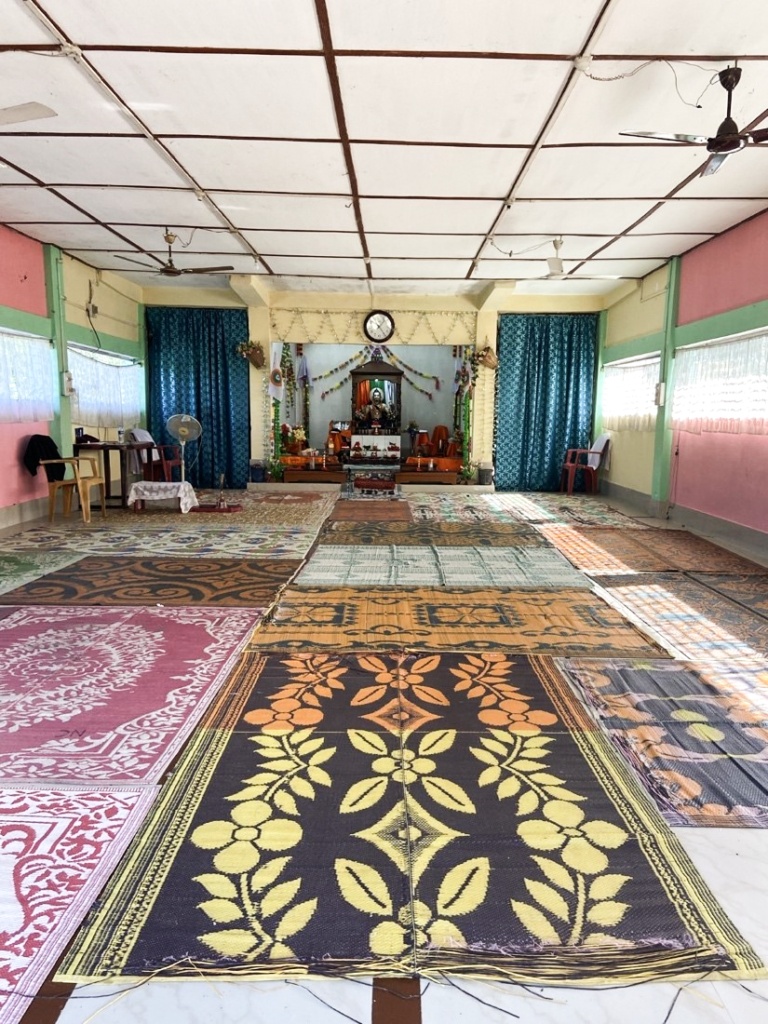
Furthermore, the leaders of Rangfraism bear their own explanation for the emergence of their institutionalized religion. Rangfraism is believed to have been the creation of the “will” of the Almighty Rangfraa, who coveted a social reform movement among the Rangfraites in “His” name. This led to the inception of the ‘Rangfraa Faith Promotion Society (RFPS)’ in 1995. The RFPS’s objectives are first, to promote, preserve and protect their traditional culture and, second, to curtail the wave of Christian conversions, which is never explicitly stated.
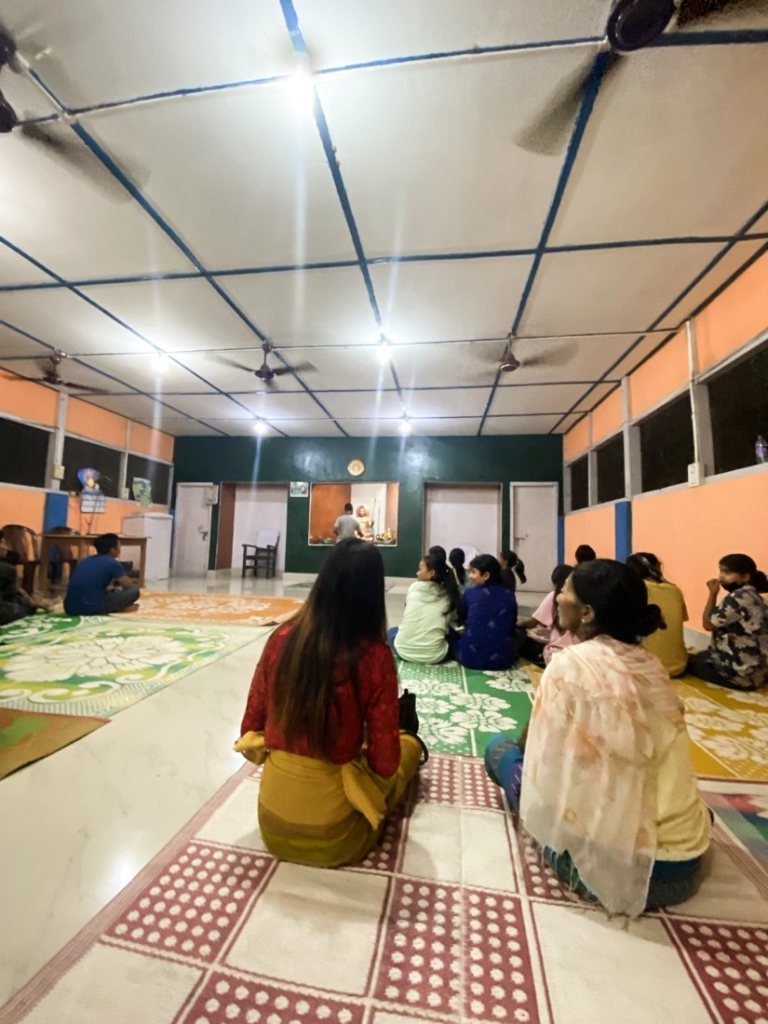
Rangsowmhum, Changlang. Credit: Leegang Unsheen, November 18, 2021
Mr. Khimun, the General Secretary of RFPS, is an Executive Engineer in the Department of Power, Miao subdivision, Changlang, and is highly revered in his community. He has an aura of sacrality and has quite a considerable social status in Changlang. The Rangfraites also refer to him as “Bada Beta” (elder son), owing to his supernatural ability to speak with their God, Rangfraa directly. The experiences are narrated during congregations and important religious Rangfraism events. It is an instance where the events retract the encounter of God by a human, a possibility of a miracle. A case in point is widely popular among the Rangfraites where many rangfraites attested that Rangfraism brings them closer to God and this may be one of the reasons why the Rangfraites continue to join the congregation. Many priests and preceptors however remarked, “Once the miracles stop occurring, we are not sure what might be left of Rangfraism.” However, Mr. Khimun believes that miracles are merely subsidiary to the philosophy behind Rangfraism, and the idea of self-sacrifice for society will, in some days, transcend the fascination with miracles and superstitious beliefs.
Recasting the past
Rangfraism was institutionalized following their traditional ideologies that corresponded with the motive of protecting and preserving their culture and tradition. The furtherance of the new religion had to be bolstered with elements of the older religion still intact. According to the leaders, this was done by complying with the three primary forms of Rangfraism religion: religious, cultural, and social.
Religiously, the prayers to the Rangfraa God are said to have been there since time immemorial. The Rangfraa God is called out before any critical event takes place. It was more focused on hunting expeditions and wars, but recently, the focus has been shifted towards agricultural practices, and day-to-day activities such as employment, baby naming, building a house, etc.
The cultural aspect observes the same and is kept intact. Since different sub-tribes enjoin in the name of Rangfraa, the cultures of the different tribes are left to follow their rituals and practices for personal events. Practices such as funerary rites are left to the tribes to deal with on their terms. The rituals of these tribes differ, but the prayers are made to the same God, Rangfraa.
Finally, all the superstitious social practices have been removed. The need to discard social practices is repeatedly reminded on days like Rangfraa Day. On such days, testimonies by the followers and the preceptor aid in providing actual life instances of its necessity. The major religions of the world primarily influence borrowed changes.
Although sacrifices are not mandatory anymore, they have not been wholly abandoned or abolished. One is free to pray to benevolent spirits such as ‘Wihau’ (spirit of mother earth) after harvesting for better yield. Mr. Khimun believes this is part of one’s culture and, therefore, one’s identity. Similarly, when asked about their funeral rituals, Mr. Khimun said that “Even though the Holy book of Rangfraa prescribes a specific procedure for the funeral, it is not mandatory for the family to follow that because Rangfraites comprises people with different communities and sub-tribes, and we respect their cultural funeral practice, and the procedures prescribed in the holy book is only an appendage to their traditional sacrificial ritual.”
The image of their new God Rangfraa has been borrowed from the mythology of Tangsa, which is referred to as ‘Tonku-wa,’ a Noah-like figure who came in the form of a dirty old beggar and destroyed the world with a flood because it was too full of evil. The image of Rangfraa has been successfully shaped into an idol by borrowing the idea of ‘Tonku-wa’.
The religious component embodies the twin aspects of Rang-Fraa. Rang embodies the aspect of power that is manifested through healing and miracles, whereas Fraa embodies the knowledge aspect of the religious component. Kayechus represent the Rangs (ones who have visions) and Rang Samaals (ones who have visions and also perform miracles and healing). They are mostly young girls who are supposedly possessed by the spirit of Rangfraa and manifest its power in the form of miracles. The Fraa is represented by Mingkayechus, the positions managed by the Mandir Secretaries and the General Secretary, Mr. L Khimun. They communicate Rangfraa’s message to the Rangfraites and are essentially involved with moral and philosophical teachings prescribed in the holy book of Rangfraism by Rangfraa himself. The healing and miracle aspect of Rangfraism has been borrowed from their understanding of their earlier relationship with their God. Sacrifices, propitiations, and incantations were offered to propitiate the number of spirits the Tangsas believed in. To carry out the process of propitiation, an expert, usually, a priest or a diviner was sought. They were either men or women who had enough knowledge of religious matters. The priest and the diviners could ascertain the success and failure of any event or an expedition by observing signs from a chicken liver, a chicken leg, or by breaking an egg. Some diviners that foresaw the future and had visions could also tell the cause and remedy of any forthcoming sickness. The status of Kayechus and Rang Samaals has been borrowed from the positions that the priest and diviners held. A senior member of the Rangfraa Mandir attested that “The institutionalized religion is a refined version of the older faith because all essential religious and ritual aspects were taken and assimilated into it.” He remarked, “Earlier we had priests, whom we called Tingwa, now Rang Samaals have taken their place. So, miracles and healing are not completely new.” The Mandir Secretary, Hangtim Tangha, also remarked, “My father in the past was also a priest, and now I am following a similar path. Not much has changed regarding the practice of healing that the priests and diviners performed; the only difference is that earlier, more men were priests, but these days, the same function is performed by women.”
The retention of these practices is said to ascertain the preservation of the Tangsa culture and their religion Rangfraism is said to be the tool that aids in preserving their culture.
Survival on their own terms
Sentiments of marginalization had significantly impacted how the leaders and the Rangfraites see themselves. They believe that the new institutionalized religion has allowed them to look beyond obsolete past imagery while keeping intact the relevant aspects of it. The present institutionalized religion seems more promising as it has been recognized at the state level and internationally, where the General Secretary has presented the ideals of the traditional religion. The past has been used as a marker of the appropriate rituals and practices at that time. The modifications were essential as they did not relay to the modern lifestyle. Rangfraa Day, celebrated in November every year to commemorate the existence of Rangfraa is celebrated with funds sanctioned by the central government.
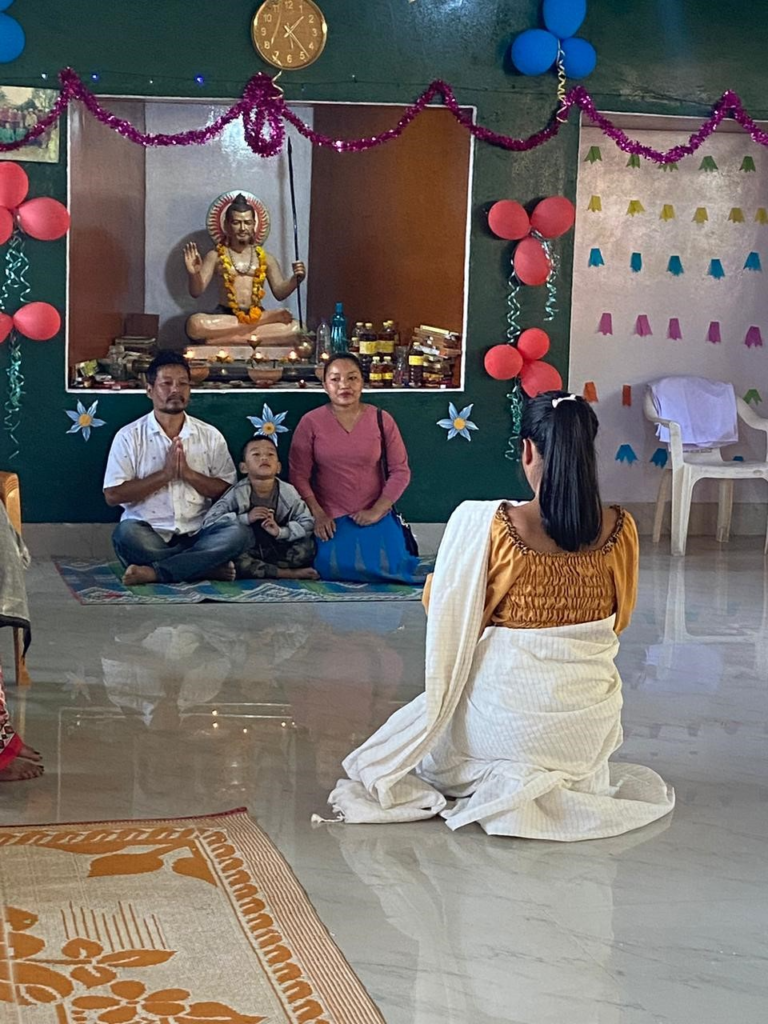
On such days, men and women are dressed in traditional attires. They perform folk songs and dance to traditional tunes. These help them identify with their roots as identities are in themselves, creations of imagined communities tied together by the idea of self-determination and self-expression. The traditional culture which they believe to be slowly diminishing under the guise of Christian conversions had been substituted for rituals and practices that dwell in the current socio-political space of performances. Such performances having changed their symbolism and structure have come to be of significant importance for them. To them, the extravagant display of their culture allows them to augment a sense of belonging to their tradition. And although such performances may be deemed as merely symbolic, devoid of their original meanings, in the end, culture and identity are whatever these communities want them to be. The strategic appropriation of their tradition allows them to reproduce imagery for themselves for internal consolidation and external consumption. In this way, the identity they create in turn, creates them.
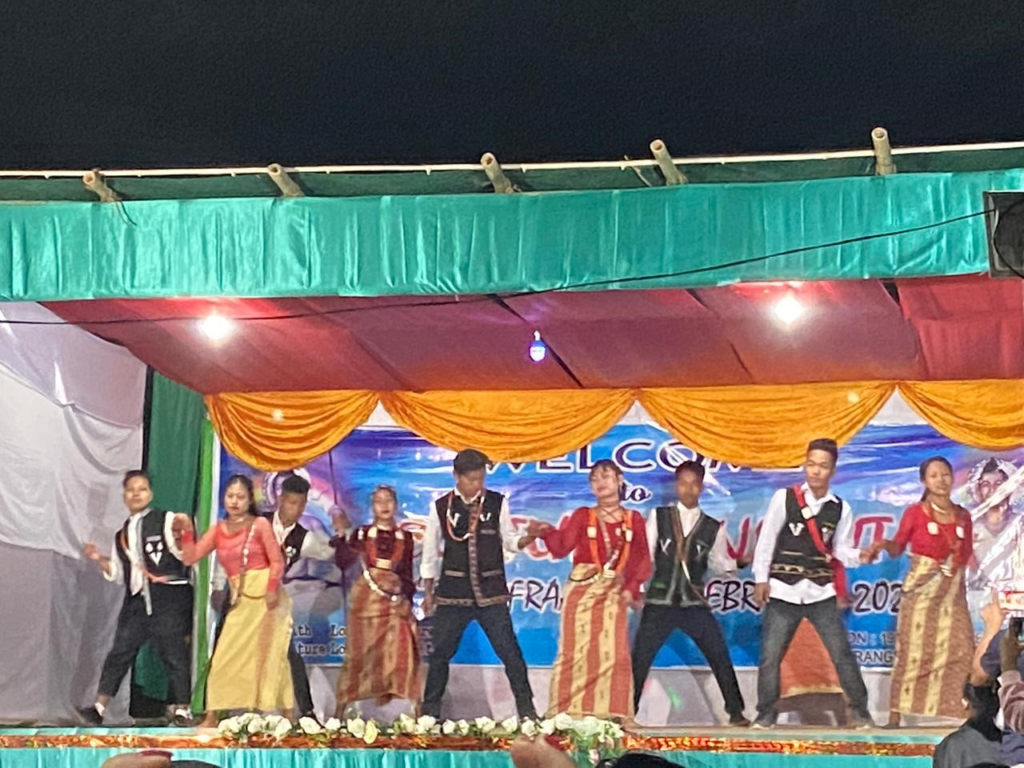
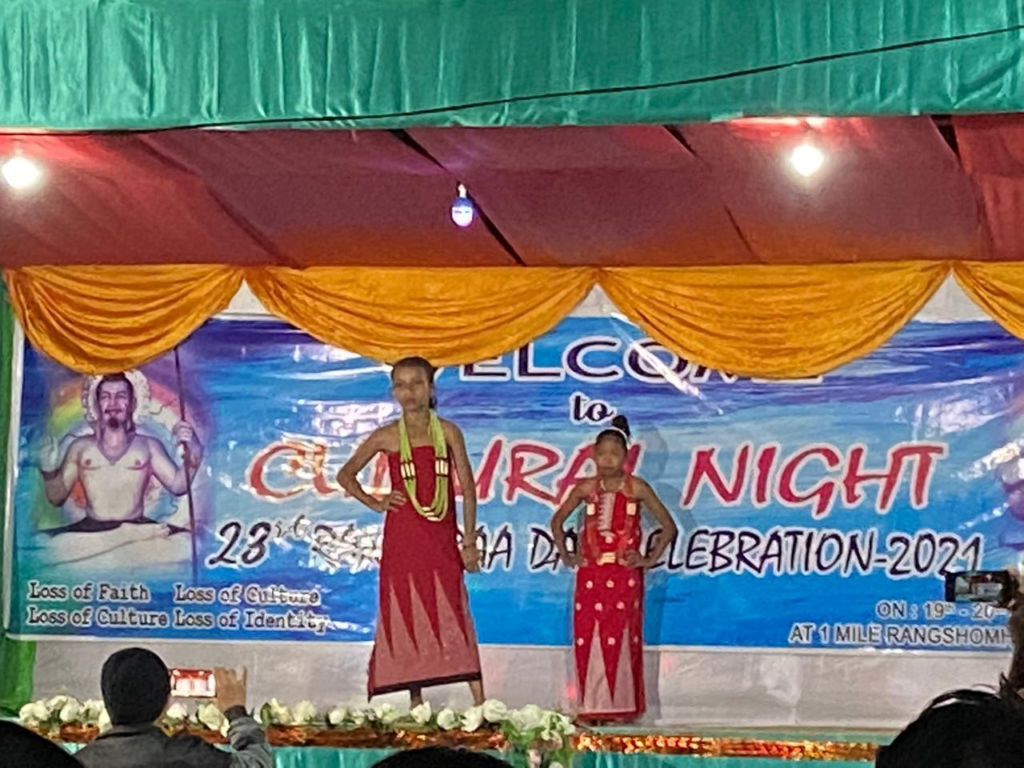
In the recent past, these traditional indigenous faith celebrations are getting bigger and bolder. The assertions of their tribal identity are not synonyms to being anti-modern and ignorant anymore. The Tangsa elites, for one, curated an ingenious way to gain support for protecting and preserving their culture. The festivals are now being supported financially and socially by the local MLAs of the region. The clout is increasing, and more and more people are joining the congregation. Although it is hard to ascertain precisely how many people have reconverted from Christianity to Rangfraism, the reconversions are inevitably persistent.
Conclusion
At the heart of it, we must acknowledge that “indigenous” is not the same as “unchanging” and it can mean very different things in different contexts. Individuals and society are said to be in consonance with survival by adhering to community spirits. Such community identities form the basis of a bargaining power that a group utilizes to create a space of their own in society. The survivability of a culture enforces the need for reviving the reminiscent ideas of the past. In contemporary democratic societies where fundamental rights and affirmative action level the playing field for communities of various backgrounds, it becomes essential for the marginalized to assert their identity and reproduce it to sustain their survival chances and reap benefits from it. Since these identities are so closely associated with religion and culture, it becomes a necessary task to understand the reformation of religion as well as their changing identity in the socio-political and cultural context. When religion is reformed, it is most often to revive the reminiscent past that a community identifies with that defines their indigeneity and vice-versa. When older traditions break or are misguided by the current needs of society, the sense of identity also gets challenged. One needs to understand that with the changing demographic and political climate of society, interactions among the people also change the identities one starts associating with. When all facets of the present society; social, political, and cultural change, it is then that, rectification and rationalization of traditional identity to newer contemporary identities become indispensable.

